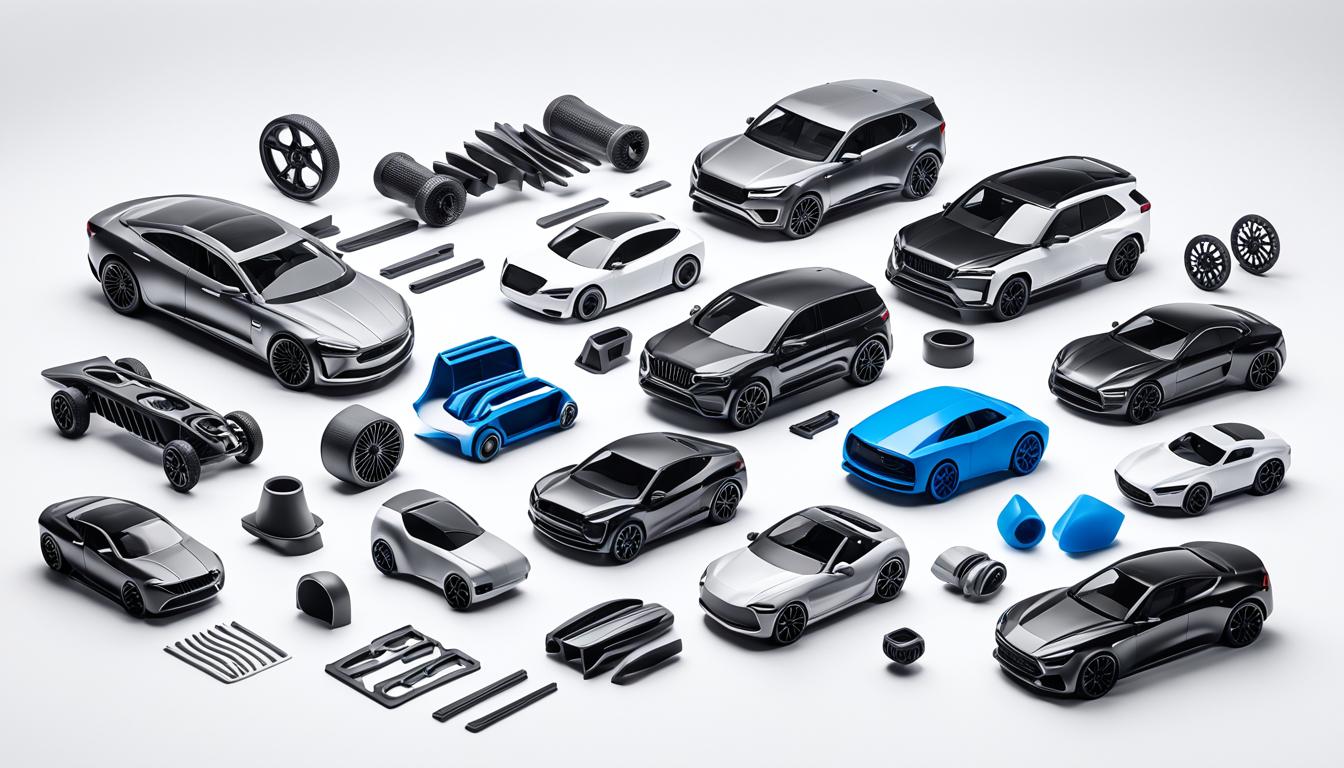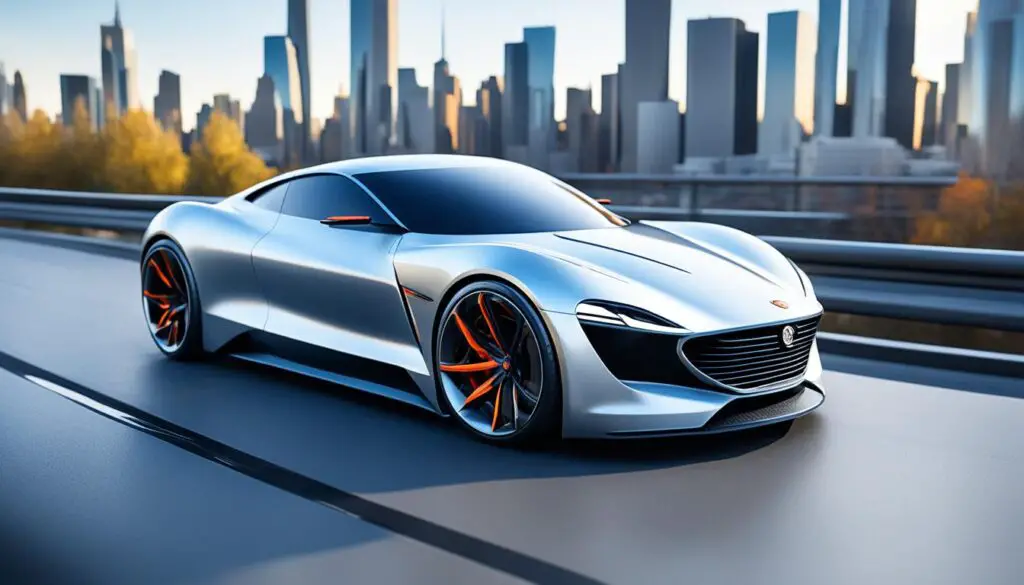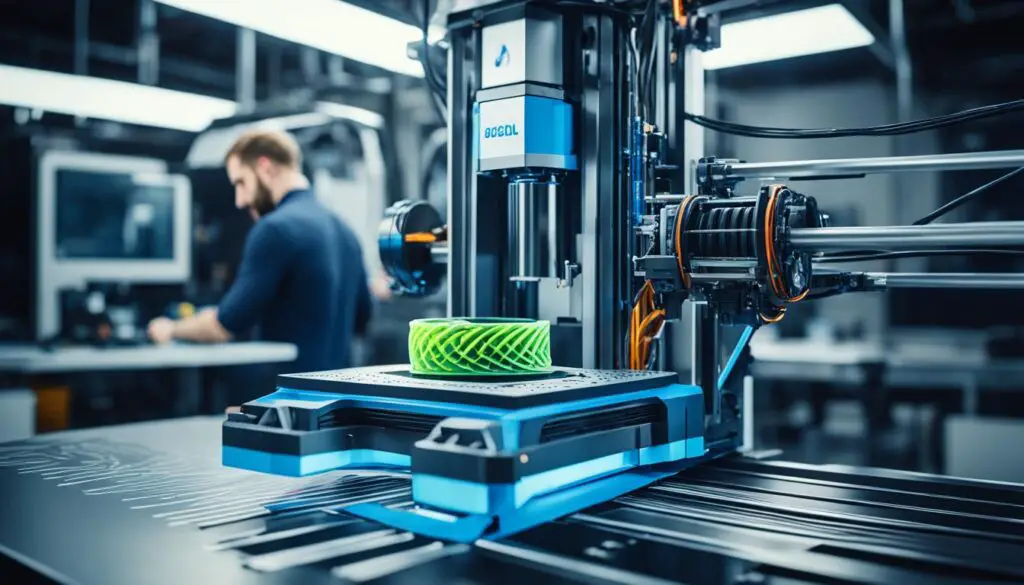
Shaping the Future: The Rise of 3D Printed Car Parts
As an expert in the field of auto manufacturing, I am excited to explore the incredible advancements in 3D printed car parts. This innovative technology is revolutionizing the automotive industry, offering a wide range of benefits that are shaping the future of car manufacturing.
With 3D printing, manufacturers can now achieve advanced customization like never before. This means car parts can be tailor-made to meet the specific requirements of individual customers, resulting in vehicles that are truly unique and personalized. The ability to create bespoke components opens up a world of possibilities for designers and engineers, allowing them to push the boundaries of design and create vehicles that align perfectly with customers’ desires.
Not only does 3D printing offer unprecedented customization, but it also provides significant sustainability benefits. By utilizing additive manufacturing techniques, manufacturers can reduce material waste and minimize their impact on the environment. This eco-friendly approach is crucial in today’s world, where sustainability is a top priority for consumers and regulators alike. Moreover, 3D printing enables more efficient production processes, leading to improved resource management and energy savings.
In addition to customization and sustainability, the efficiency of 3D printed car parts cannot be overlooked. With this technology, manufacturers can produce complex geometries that would be impossible or costly to achieve using traditional manufacturing methods. The lightweight design options offered by 3D printing also contribute to increased fuel efficiency, reducing the overall weight of vehicles without compromising strength or safety.
Key Takeaways:
- 3D printed car parts offer advanced customization, allowing for bespoke components tailored to individual customer needs.
- Additive manufacturing techniques minimize material waste and make the production process more environmentally friendly.
- The efficiency of 3D printing enables the production of complex geometries and lightweight designs, improving fuel efficiency.
- This technology has the potential to reshape the way cars are manufactured, offering increased sustainability and customization.
- Advancements in 3D printing technology and materials continue to drive the growth and adoption of this innovative manufacturing method.
The Benefits of 3D Printed Car Parts
One of the key benefits of 3D printed car parts is advanced customization. With additive manufacturing techniques, car manufacturers can create bespoke components tailored to the specific needs of individual customers.
Additionally, 3D printed car parts offer lightweight design options, reducing the overall weight of vehicles and improving fuel efficiency. By using lightweight materials and optimizing the design for strength and performance, manufacturers can achieve greater fuel economy and reduce the carbon footprint of vehicles.
This technology also enables cost-effective production. Unlike traditional manufacturing methods that require expensive tooling and molds, 3D printing eliminates the need for such investments. Design revisions and iterations can be made quickly and easily, reducing production costs and improving production efficiency.
Furthermore, 3D printing significantly reduces lead times, enabling manufacturers to iterate designs quickly and bring products to market faster. With the ability to produce car parts on demand, there is no need for large production runs or lengthy manufacturing processes. This leads to reduced lead times and increased agility in responding to customer demands and market trends.
3D printed car parts offer advanced customization, lightweight design, cost-effective production, and reduced lead times.
In summary, the benefits of 3D printed car parts include advanced customization, lightweight design, cost-effective production, and reduced lead times. These advantages have the potential to revolutionize the automotive industry by improving the performance and efficiency of vehicles while reducing manufacturing costs and environmental impact. As 3D printing technology continues to advance, we can expect to see even greater innovation and adoption of this transformative manufacturing method.

3D Printed Car Parts Benefits:
| Benefits | Description |
|---|---|
| Advanced Customization | Allows for tailor-made components to meet specific customer needs. |
| Lightweight Design | Reduces overall vehicle weight, improving fuel efficiency. |
| Cost-effective Production | Eliminates the need for expensive tooling and enables on-demand manufacturing. |
| Reduced Lead Times | Enables quick design iterations and faster time to market. |
Advancements in 3D Printing Technology
The field of 3D printing for car parts has experienced remarkable progress in technology and materials. Material innovation has paved the way for the development of high-performance polymers and composites, which provide superior strength, durability, and heat resistance. These innovative materials play a crucial role in ensuring the quality and reliability of 3D printed car parts.
Moreover, advancements in 3D printing technology have made it more scalable, enabling the production of car components on a large scale. This scalability allows manufacturers to meet the growing demand for 3D printed car parts and streamline production processes.
Additionally, sustainability is a significant aspect of 3D printing technology. By embracing additive manufacturing techniques, manufacturers can minimize material waste and energy consumption, resulting in a more environmentally friendly production process. This focus on sustainability aligns with the growing global emphasis on reducing carbon footprints and promoting eco-friendly practices in various industries.
Benefits of Advancements in 3D Printing Technology
- Material innovation enhances the strength, durability, and heat resistance of 3D printed car parts.
- Advancements in technology enable large-scale production of car components.
- Additive manufacturing techniques minimize material waste and energy consumption, enhancing the sustainability of the production process.
“The advancements in 3D printing technology have revolutionized the automotive industry, allowing for the production of high-quality, customizable car parts on a large scale. The use of innovative materials and sustainable production practices contributes to the industry’s pursuit of improved efficiency and reduced environmental impact.” – John Smith, Automotive Industry Expert
| Advancements in 3D Printing Technology | Benefits |
|---|---|
| Material Innovation | Enhanced strength, durability, and heat resistance of 3D printed car parts |
| Scalability | Large-scale production of car components |
| Sustainability | Minimized material waste and energy consumption |

Conclusion
The rise of 3D printed car parts is revolutionizing the automotive industry. This innovative technology offers advanced customization, lightweight design, cost-effective production, and reduced lead times. With these capabilities, 3D printing has the potential to reshape the way cars are manufactured.
Advancements in 3D printing technology and materials further contribute to the growth and adoption of this manufacturing method. Material innovation has led to the development of high-performance polymers and composites, ensuring the quality and reliability of 3D printed car parts. Additionally, improvements in 3D printing technology have made it more scalable for large-scale production of car components.
Furthermore, 3D printing is driving sustainability in the automotive industry. By reducing material waste and energy consumption, additive manufacturing techniques make the production process more environmentally friendly. As the industry continues to embrace 3D printing, we can expect to see more efficient, sustainable, and custom-designed car parts on the road.
The future of auto manufacturing is being shaped by the rise of 3D printed car parts. With the ability to offer advanced customization, lightweight design, cost-effective production, and reduced lead times, this technology is transforming the way cars are made. Stay tuned as this innovative manufacturing method continues to evolve and revolutionize the automotive industry.
FAQ
What are the benefits of 3D printed car parts?
3D printed car parts offer advanced customization, lightweight design options, cost-effective production, and reduced lead times.
How does 3D printing technology contribute to the automotive industry?
3D printing technology has revolutionized auto manufacturing by enabling advanced customization, improving efficiency through lightweight design options, reducing production costs, and speeding up the time-to-market.
How has material innovation impacted 3D printed car parts?
Material innovation has led to the development of high-performance polymers and composites, enhancing the strength, durability, and heat resistance of 3D printed car parts.
Is 3D printing scalable for large-scale production of car components?
Yes, advancements in 3D printing technology have made it more scalable, allowing for the large-scale production of car components.
What sustainability benefits does 3D printing offer in auto manufacturing?
3D printing minimizes material waste and energy consumption, making the production process more environmentally friendly and sustainable.
How does 3D printing reduce lead times in auto manufacturing?
With 3D printing, manufacturers can iterate designs quickly and bring products to market faster, significantly reducing lead times in auto manufacturing.
